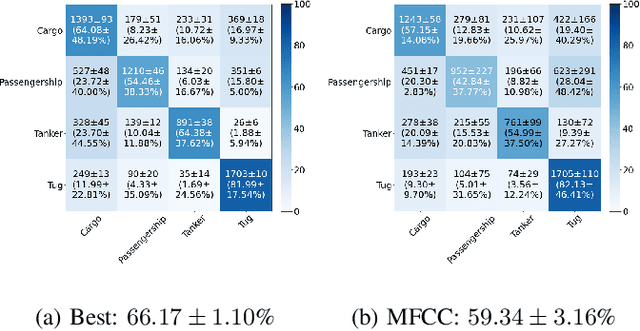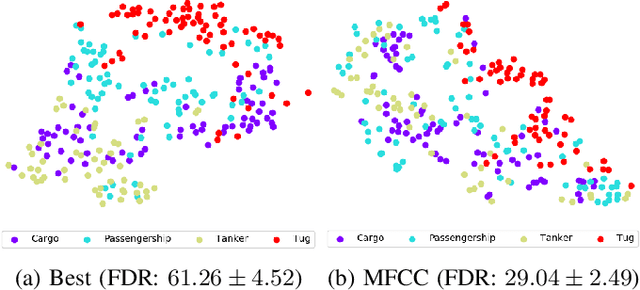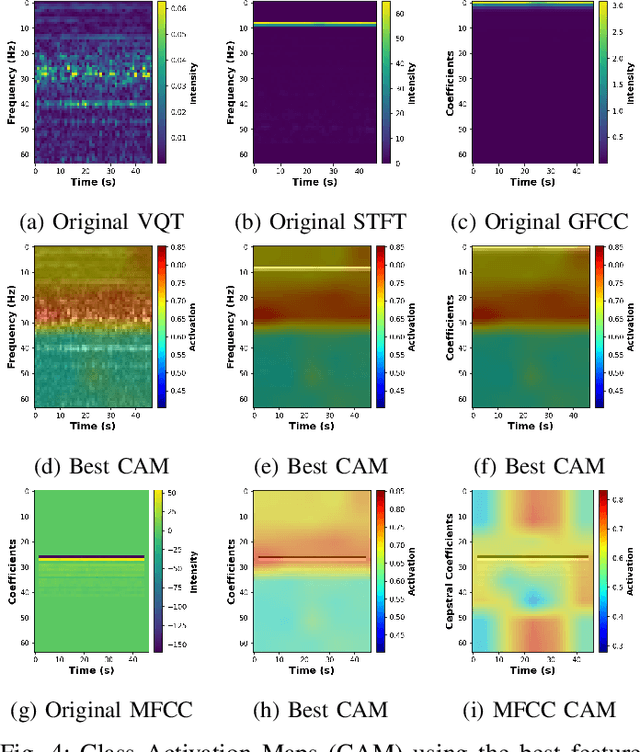Investigation of Time-Frequency Feature Combinations with Histogram Layer Time Delay Neural Networks
Paper and Code
Sep 20, 2024



While deep learning has reduced the prevalence of manual feature extraction, transformation of data via feature engineering remains essential for improving model performance, particularly for underwater acoustic signals. The methods by which audio signals are converted into time-frequency representations and the subsequent handling of these spectrograms can significantly impact performance. This work demonstrates the performance impact of using different combinations of time-frequency features in a histogram layer time delay neural network. An optimal set of features is identified with results indicating that specific feature combinations outperform single data features.
* 5 pages, 14 figures. This work has been submitted to the IEEE for
possible publication. Copyright may be transferred without notice, after
which this version may no longer be accessible
 Add to Chrome
Add to Chrome Add to Firefox
Add to Firefox Add to Edge
Add to Edge